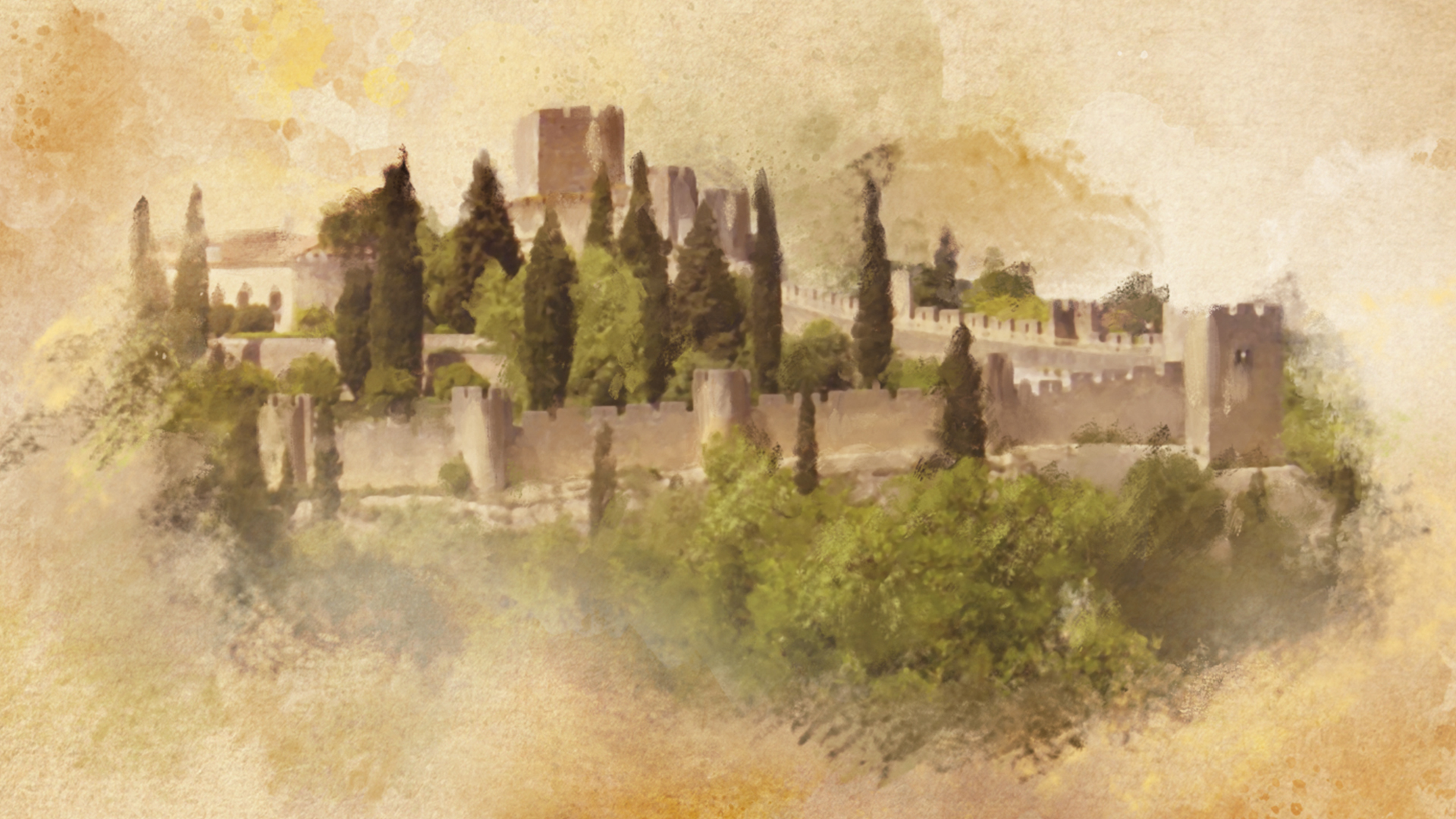Tomar Castle is the most important structure that the Templars built in Portugal, and is considered one of the masterpieces of European military architecture of the 12th century. Imposing and technically very sophisticated, it is polygonal in plan and small, consisting of three towers, two of which rise above the wall.
Construction began in 1160, on the structure of the ancestral Ceras Castle, and it was the first action of the Knights Templars after the donation of that territory by King Afonso Henriques, compensating for the failed donation of Santarém.
Located on a hill overlooking the city of Tomar, in continuity with the Convent of Christ, this castle has the first example of a keep built in Portugal. It is rectangular in plan, about 20 metres high and has four storeys. For safety reasons, the ground floor has no openings and access to the interior was via a trapdoor.
It was in Tomar Castle that D. Gualdim Pais experimented for the first time with the construction of an alambor, a ramp built at the base of the walls or the towers, with the purpose, not only of increasing the stability of the structures, but also to make the enemies’ mission more difficult.
Having concentrated the resources and dedication of the Portuguese Templars during the 1160s, with the aim of becoming the headquarters of the Order of the Temple in Portugal, the castle was part of an extended defensive circuit, divided into three distinct areas. The castle and the Templar quarters were located on the highest part, while on the opposite side was the charola, the prayer area. The lowest part, to the south, was home to the village.
According to Mário Barroca, the structure of Tomar Castle follows the model of the typical fortifications of the south, being composed of an almedina, courtyard, and kasbah, the latter being located on the highest part of the hill and divided into a military area and a religious zone.
Despite some alterations made in the 16th and 17th centuries, Tomar Castle keeps its foundational structure intact, having been classified as a National Monument on the 23rd June 1910.
Tomar Castle
